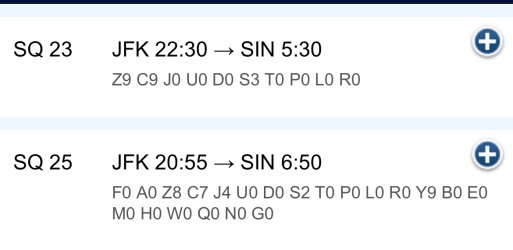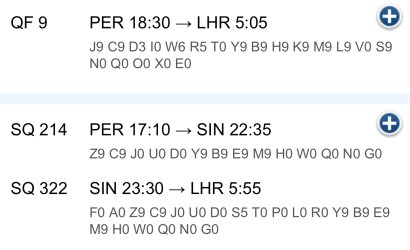As someone who has been spending a lot of time off reading about the airline business, there is a lot of misinformation coming from this thread. I'm not even sure where to begin.
TLDR at the bottom.
1) Airlines make their money primarily based off selling tickets. Pricing for said tickets is dictated by demand. Demand for specific flights, demand for specific airlines, demand for specific timings, demand for specific seats, etc. (Keep in mind that comment I made about demand for specific airlines for later.)
The size of a market truly doesn't matter if you can charge high fares.
I could yap on and on about this but lets take an example. Counterwise why isn't there much service from Los Angeles to Mexico? On paper there is a big Mexican community in SoCal but the yields are trashy, meaning people aren't willing to pay a lot for a flight between here.
2) Demand.
Australia to Europe is a big market. Trying to compare the USA to Oceania to that doesn't make sense because that market is far smaller. There are going to simply going to be more people connecting over Asia or the Middle East as a result.
Again trying to conpare these two markets doesn't take into account each specific market. Is there a long history of masses of people connecting to the USA from Aus? No there isn't, people to/from here have not been trained to connect the same way pax have been to/from Europe. Most demand to/from Oceania is to the USA is to Los Angeles anyways which is a geographically ideal hub.
You're never going to get a nonstop from Perth to Munich. You're never going to get a nonstop from Melbourne to Belgrave. You're never going to a nonstop from Sydney to Milan. The demand simply isn’t there and you will need a big connecting hub to handle these smaller markets. That's why QF partnered with EK in the first place.
3) Misunderstanding traffic flows.
A good portion of the traffic from these Asia and ME hubs is people wanting to get to said places in Asia and the ME. Connecting a few passengers on a plane is an easy way to make a few extra bucks as naturally due to all the competition for one stop connections
Yes airlines do take advantage of this and add extra seats to take into account extra connecting passengers and make extra cash on top but those planes wouldn't be flying without the O/D component.
4) Seasons.
Airlines make money in summer (when demand is high), they don’t make money in winter.
One way to get around this is by sending planes where either they make more (or lose less) money where demand is stronger during winter. Since the southern hemisphere has the opposite season of what's in the northern hemisphere, airlines can squeeze a few extra bucks by sending capacity down under during northern winter aka southern summer.
You're going to see airlines keep serving Australia for that reason alone.
5) Growth.
Australia has a rapidly growing population and good economic growth. This increases demand over time and allows plenty of room for more supply to be added here. (This also means more airlines want to fly here for strategic reasons but that's a separate topic.)
6) Case study - New York to Delhi flights.
Did you know that Air India, despite their POS on the Indian end and flying nonstop pulls in the lowest average fares on this route?
United (nonstop), American (nonstop but super weak in NYC), even Emirates who force pax to connect overnight manage to charge more for their flights to Delhi from NYC than Air India.
Why am I bringing this up? I'll leave you to your thoughts...
7) Your personal opinion doesn't matter. Harsh truth but you have to look at the facts, data and the overall big picture.
We do realise that they ordered only 12 ULH capable planes right? (And that long flights like this need 2 or 3 or 4 frames each?) And that they only have four LHR slots?
Similar to JetBlue and their European flights QF won't make a dent in the market.
Perth has served as a great hub for Qantas, and it will continue to serve as a great Western Gateway for QF and the WA economy.
But this idea that Qantas, an airline whose reputation has fallen significantly, an airline that can't even attract half the pax travelling between Perth and London (most pax still connect), will somehow steal thousands of passengers travelling betwen Oceania and Europe daily, fill up all these planes and make bank is nonsense.
TLDR:
Passengers will not suddenly stop flying dozens of airlines en masse in favour of a much more expensive nonstop, nonstop flights that may not ever exist.
















